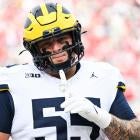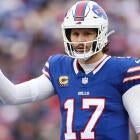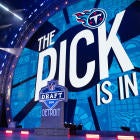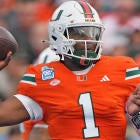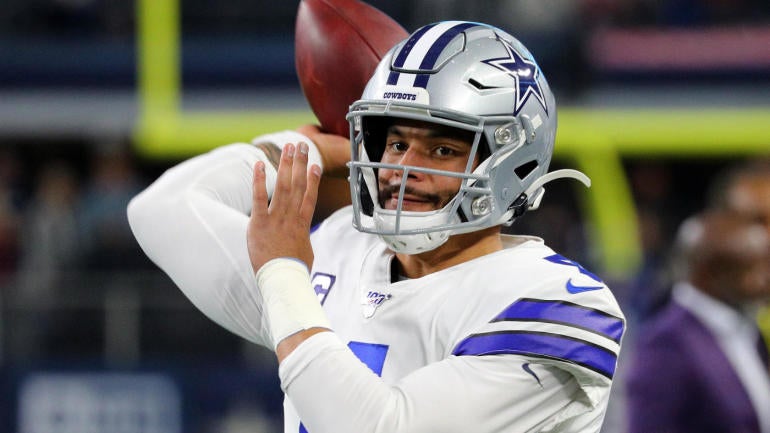
The NFL suffering a loss of revenue because of the COVID-19 pandemic is an absolute certainty. The revenue shortfall's impact on the 2021 salary cap has been inevitable. Next year's salary cap potentially could have been under $130 million without the league and the National Football League Players Association coming up with a solution.
The NFL and NFLPA reached an agreement late last week where the 2021 salary cap will have a floor of $175 million. The revenue loss will be spread out the next three years. If revenues are better than expected, the 2021 salary cap could be higher. This year's salary cap will remain at $198.2 million.
Fortunately, unused salary cap can be carried over from one year to the next. Over the last three years, the average carry over amount for each team has been $10,955,962 according to NFLPA data. If these carry over figures are a good barometer for this season, the average adjusted salary cap for 2021 will be in the $186 million neighborhood.
Prior to the pandemic, a $210 million league-wide salary cap in 2021 would have been a reasonable projection considering the average growth in recent years has been approximately seven percent. The 2021 salary cap is essentially being rolled back three years. The 2018 salary cap was $177.2 million. Obviously, the situation could have been a lot worse for next year, but will still be problematic because teams typically do salary cap planning for three-year periods.
Teams with the biggest 2021 salary cap problems
The three teams likely to be affected the most by the lower 2021 salary cap are the Eagles, Falcons, and Saints. Each team has well over $200 million in 2021 salary cap commitments when using offseason cap accounting rules, where only the top 51 cap numbers matter.
The Eagles have the most difficult 2021 salary cap situation according to NFLPA data, with just under $263.725 million of 2021 cap commitments for their top 51. I made manual adjustments to include signed draft picks that weren't being reflected. This also includes wide receiver Marquise Goodwin's contract tolling with him voluntarily opting of this season because of COVID-19. Similar adjustments will also be made for the Saints and Falcons. The Eagles currently have approximately $22.8 million of 2020 cap space, which can be carried over to 2021 and could slightly cushion the blow of next year's salary cap being roughly $35 million less than originally anticipated.
Players have already been opting out of the 2021 season, including three Pats starters, so what will that mean for New England and other teams? Brady Quinn joins Will Brinson to break it all down; listen below and be sure to subscribe for daily NFL goodness.
The Saints aren't that far behind the Eagles in 2021 salary cap commitments for the top 51 with a little less than $260 million. There is currently just over $7.875 million of 2020 cap room for New Orleans.
The top 51 Falcons are accounting for approximately $221 million of 2021 cap space. The Falcons have just under $8.275 million of breathing room right now with this year's salary cap.
The Dak Prescott dilemma
The revenue shortfall is going to make designating quarterback Dak Prescott as a franchise player for a second time in 2021 at $37,690,800 more challenging. The $31.409 million franchise tag Prescott is playing under this season is 15.85 percent of the league-wide $198.2 million salary cap. Prescott's 2021 tag would be 21.54 percent of the salary cap at the $175 million floor next year.
Dallas already has nearly $182 million in 2021 salary cap commitments under offseason accounting rules. In order to accommodate a second Prescott franchise tag next year, Dallas will need to restructure contracts to create salary cap room, negotiate pay cuts with contracted players and/or release some players.
Franchise tags
Non-exclusive franchise tag numbers are surely going to decrease at every position in 2021 because of the calculation methodology. A franchise player receives the greater of 120 percent of his prior year's salary or the average of the five largest salaries (typically salary cap numbers) annually at his position over a five year period that's tied to a percentage of the overall salary cap. More specifically, the number for each position is determined by taking the sum of the average of the top five salaries for the previous five seasons and dividing by the sum of the actual NFL salary cap amount for the previous five seasons. The resulting percentage, which is known as the cap percentage average in the NFL collective bargaining agreement, is then multiplied by the actual salary cap for the upcoming league year.
Buccaneers wide receiver Chris Godwin is a good example to illustrate this point. He will be a top franchise tag candidate in 2021 absent a new deal since he is in the final year of his rookie contract. The wide receiver franchise number is $17.865 million this year. With a $175 million salary cap, the 2021 wide receiver number projects to $15.681 million. That would be a little more than a 12 percent drop from this year. The wide receiver amount would be on par with the 2017 figure of $15.682 million when the salary cap was $167 million. The NFL and NFLPA agreeing to a freeze on franchise and transition numbers would be one way to prevent the decrease from happening.
Veteran player contracts
The reduced salary cap is probably going to produce a glut of players available in free agency next year, since teams could be releasing more players than usual in order to be cap compliant at the start of the 2021 league year. Players who signed one-year prove-it deals hoping to cash in next year, such as Titans edge rusher Vic Beasley and Colts cornerback Xavier Rhodes, might be in for a rude financial awakening without performing at the highest level this season.
Nonetheless, Pro Bowl caliber players and the top talent at each respective position are likely to get paid no matter the salary cap environment. For example, the Chargers didn't hesitate in making two-time Pro Bowl defensive end Joey Bosa the NFL's highest-paid non-quarterback in history at $27 million per year days after the agreement on the 2021 salary cap was reached. The 49ers are expected to dramatically reset the tight end market with George Kittle, arguably the best player at his position, at some point before next offseason. A contract extension for Texans quarterback Deshaun Watson will likely make him league's second highest paid player, eclipsing Seahawks quarterback Russell Wilson's $35 million average yearly salary.
Minimum team spending
The minimum spending requirements were modified in the new CBA. Teams will have to spend 90 percent of the salary cap in cash over the three-year period of 2021 through 2023 instead 89 percent over a four year period as in the previous CBA.
There isn't a requirement to spend 90 percent in each of the three years. A team could keep cash expenditures low in 2021 and 2022, when the salary cap is reduced and spend big in 2023 to hit the 90 percent threshold over the three years. Some teams taking an approach like this, especially those with potentially the tightest salary caps in 2021, wouldn't be too surprising. Most of the current TV deals expire after the 2022 season. A big increase in the new media rights deals is still expected, which in turn should create substantial salary cap growth.
![[object Object] Logo](https://sportshub.cbsistatic.com/i/2020/04/22/e9ceb731-8b3f-4c60-98fe-090ab66a2997/screen-shot-2020-04-22-at-11-04-56-am.png)









